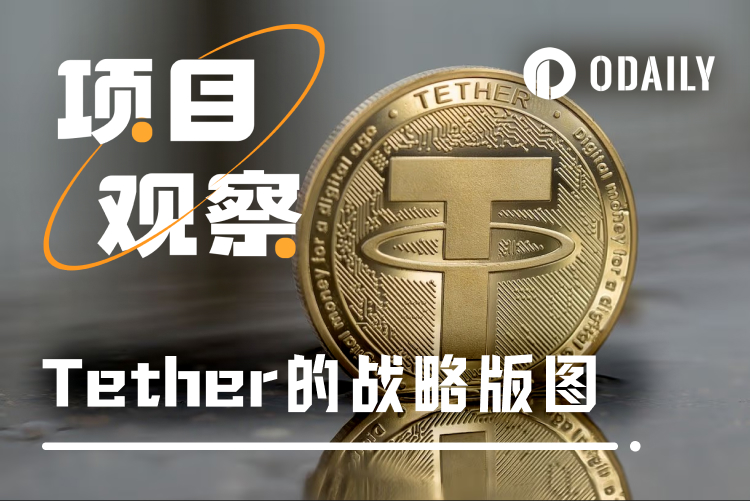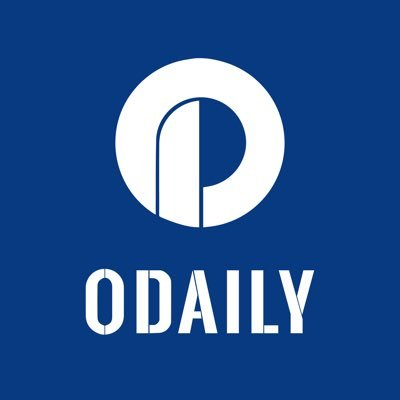Tether is crazy to shoot: under the general trend of compliance, the savage growth of the "king of stablecoins" is anxious?
Original | Odaily (@OdailyChina)
Author|Azuma(@azuma_eth)

Tether, the absolute leader in the stablecoin track, has made frequent moves recently, not only in cryptocurrency verticals such as mining, exchanges, and Layer 1/Layer 2, but also in AI, brain-computer interfaces, agriculture, sports and other industries.
Although Tether's business tentacles have not been limited to the stablecoin sector in the past few years, the pace of its layout has accelerated significantly recently. The reason for this is that with the gradual advancement of the GENIUS Act, stablecoins are gradually integrating into the mainstream financial market in the form of compliance, but because it is difficult for Tether and USDT to meet the requirements of the GENIUS Act for issuer registration, reserve asset types, auditing standards and other aspects, their market position is bound to be impacted in the subsequent compliance process. In this context, Tether seems to be somewhat anxious, and the recent multi-directional acceleration layout may be Tether's attempt to break the game.
Tether is facing challenges in the context of compliance trends
Earlier this month, the much-talked-about stablecoin regulation bill, known as the GENIUS Act, was officially put to a final vote by senators and sent to the House of Representatives for consideration.
The GENIUS Act was first introduced in February this year by U.S. Senators Bill Hagerty, Tim Scott, Kirsten Gillibrand, and Cynthia Lummis to establish a legal framework for the legal use of stablecoin payments in the United States.
The core provisions of the Act are as follows:
-
Definition of payment stablecoin: A digital asset that is pegged to a fixed monetary value and needs to be fully backed by the U.S. dollar or other highly liquid assets at a 1:1 ratio, and is dedicated to payment and settlement scenarios.
-
Dual-licensing regulation: Federally regulated, with issuers with a market capitalization of more than $10 billion subject to federal regulation; State-level regulation, with the option of state-level registration for small publishers (subject to federal equivalence).
-
100% Reserve Requirement: Reserve assets are limited to cash, short-term U.S. Treasury bonds, or central bank deposits, and must be segregated from working capital. A certificate of sufficiency of reserves is required to be submitted every month to ensure that users can redeem at face value.
-
Mandatory Disclosure of Transparency: Regular disclosure of reserve composition and redemption policies, compliance audits conducted by a CPA firm.
-
Anti-Money Laundering Compliance: Bringing issuers under the Bank Secrecy Act to meet financial institution-level AML obligations.
-
Priority user protection: When an issuer goes bankrupt, stablecoin holders' claims take precedence over other claimants.
-
Clear regulatory ownership: Clearly stipulate that payment stablecoins do not belong to the category of securities, commodities or investment companies, and draw a clear regulatory boundary.
In short, as the first federal-level stablecoin bill, the market generally believes that the GENIUS Act will help stablecoins get out of the barbaric growth stage and officially integrate into the compliance market, but at the same time, the GENIUS Act also puts forward strict compliance requirements for existing stablecoin issuers, among which USDT, which is registered overseas, has relatively complex reserve assets (some of which are Bitcoin and gold), and has long refused to fully audit and disclose the USDT is likely to be hit the hardest.
In a previous interview with Forbes, Tether CEO Paolo Ardoino had said that the company plans to issue a new compliant stablecoin in the U.S. market, which will be "tailored to the highly banked, digitized U.S. economy." However, this may just be Tether's compromise in response to the US stablecoin compliance trend, after all, USDT is Tether's core product, and USDT will foreseeably encounter greater competitive pressure in the near future, which is obviously not good news for Tether. WSJ has also previously reported that the GENIUS Act's compliance requirements could lead to Tether becoming the "biggest loser".
Similar situations are not just happening in the United States. In February this year, the list of stablecoin issuers compliant with the European Union's Cryptoasset Market Regulation Act (MiCA) was announced, and Tether was not included in the list of 10 institutions, including Tether's biggest competitor Circle (USDC issuer).
Under heavy pressure, Tether accelerated its layout
Naturally, Tether will not "sit still". Not long ago, Paolo Ardoino emphasized that Tether will continue to focus its business on markets outside the United States, serving the 3 billion users around the world who have not yet fully accessed the traditional financial system, and avoiding direct competition between USDT and other stablecoins that favor mainstream finance.
At the same time, Tether is also accelerating its layout inside and outside the cryptocurrency industry, in order to find new growth points.
According to Odaily Planet Daily, in 2025 alone, Tether has made frequent investments in cryptocurrency verticals such as mining, wallets, Layer 1/Layer 2, and exchanges in the form of direct entry or indirect investment.
-
Mining:
In March, Tether announced that it would increase its stake in Bitdeer to 21.4%;
In June, Tether announced plans to open-source its Bitcoin mining operating system, MOS, in the fourth quarter of this year to lower the barrier to entry for new miners;
Also in June, Tether announced that the company held more than 100,000 BTC in total, aiming to become the world's largest bitcoin miner by the end of the year.
-
Wallets:
In January, Rumble, a video-sharing platform invested by Tether, announced that it would launch Rumble Wallet, which intends to help manage payments through AI agents/assistants.
In February, Tether announced a strategic investment in Zengo, a self-custodial crypto wallet, to drive Zengo's support of the Tether-based stablecoin across the major blockchain ecosystems it covers;
Also in February, Paolo Ardoino published an article criticizing MetaMask for lagging, or intended to promote the wallet products he supports.
-
Layer 1/Layer 2 aspects:
At the beginning of June, Stable, a Layer 1 project backed by Tether investment, was officially announced, and Stable will use USDT as the native gas token, and Paolo Ardoino will serve as the project's advisor.
In mid-June, Plasma, another popular Bitcoin Layer 2 project backed by Tether Investment, successfully completed the public deposit stage, and the $1 billion deposit quota was quickly snapped up.
-
For exchanges:
In June, Tether announced a strategic investment in digital asset exchange Orionx, the exact amount of which was not disclosed.
What's even more amazing is that in addition to frequent shots within the cryptocurrency industry, Tether's layout has already expanded beyond the industry, covering AI, brain-computer, agriculture, sports and many other fields.
-
In February, Tether announced that its Tether Data unit was spearheading the development of BrainOS, an open-source platform designed to democratize the use of advanced brain enhancement tools.
-
In March, Tether announced that it would pay around €10 million to acquire a 30% stake in Italian media company Be Water, which owns podcast production companies Chora Media and Will Media and film and television production and distributor Be Water Film.
-
In March, Paolo Ardoino posted on X highlighting Tether's plans to recruit talent aggressively to support the development of its AI, telecom and data projects.
-
In April, Paolo Ardoino revealed in his latest interview that Tether plans to launch its own AI platform in June (or September), which will be a peer-to-peer alternative to models such as OpenAI, allowing users to take control of their own data and do all the inference, executing all the complex AI logic in their own devices.
-
In April, Tether announced the completion of a tender offer for up to 49,596,500 common shares of South American agriculture giant Adecoagro S.A. at a price of $12.41 per share, for a total consideration of more than $615 million.
-
In May, Tether announced the upcoming QVAC (QuantumVerse Automatic Computer), an intelligent development platform that enables highly scalable AI applications and agents to run directly on on-premises devices without relying on centralized services and cloud infrastructure, protecting users from enterprises accessing private user data.
-
In June, Tether announced that it had formally requested participation in Juventus' capital increase plan in May and applied for a seat on the board. Tether currently holds more than 10% of Juventus FC, making it the second largest shareholder after the controlling shareholder, Exor.
-
In mid-June, Tether announced that it had strategically acquired an equity stake in Elemental Altus, a Canadian-based listed gold royalty company that aims to integrate long-term stable assets such as gold and Bitcoin into its ecosystem.
-
At the end of June, Paolo Ardoino spoke publicly again, saying that Blackrock Neurotech, a brain-computer interface company that Tether invested $200 million in last April, was much more advanced than Musk's Neuralink.
-
Just yesterday, Paolo Ardoino also announced that PearPass, an open-source password manager developed by Tether, has started testing and will soon be open-sourced on the platform......
The best days are over
With a hierarchical approach to stablecoin liquidity and adoption, Tether with just 150 employees has achieved a profit of about $13 billion in 2024, making it the most profitable company in the cryptocurrency industry and the world.
However, the best days are behind us, and the savage growth phase of stablecoins is coming to an end. In the future, Tether will inevitably face new and old competitors with harder backgrounds, more thorough compliance, and stricter audits in the market competition.
For Tether, it's time to look to the future, and it seems to be aware of this in terms of recent layout cadences.
